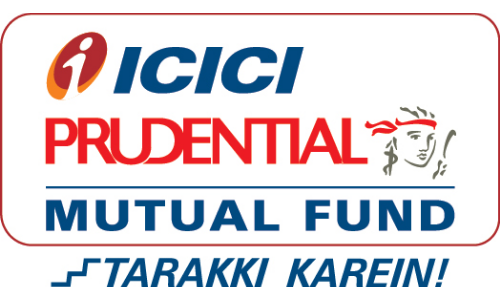Best Time to Invest in Debt Mutual Funds: How Falling Interest Rates Boost Returns
If you ask experienced investors about the smartest time to enter debt Mutual Funds, most will give a simple answer: when interest rates start falling. But why does this happen? Why do debt funds—often seen as the “boring” cousin of equities—suddenly deliver some of their strongest returns in a rate-cut cycle?
This guide explains everything in the simplest possible way—without losing the depth that long-term investors need.
▶️For a complete breakdown on falling interest rates and debt funds, watch:- The Debt Fund Setup No One Is Talking About | Falling Rates = Big Returns?
Why Interest Rates Matter for Debt Mutual Funds
Interest rates and debt funds have a direct, inverse relationship -
- When interest rates rise → Bond prices fall → Debt fund NAV drops
- When interest rates fall → Bond prices rise → Debt fund NAV jumps
This happens because existing Bonds with higher coupon rates become more valuable when new bonds are launched at lower rates.
Simple Example
- Suppose you hold a bond paying 7% interest.
- The RBI cuts rates, and new bonds are issued at 6%.
Your 7% bond is now more attractive → its market price rises → your debt fund NAV increases.
- Debt funds are basically portfolios of such bonds.
- So when bond prices rise, your fund’s value rises too.
How Falling Interest Rates Boost Debt Fund Returns
Debt funds gain the most during rate-cut cycles, not stable periods.
Here’s why -
1. Bond Prices Rise When Rates Fall
This is the fundamental pricing rule in fixed-income markets. Debt fund NAVs move in the same direction as bond prices.
If a ₹100 bond rises to ₹105 when rates fall, your fund’s NAV reflects it.
2. Long Duration Funds Benefit the Most
Duration measures how sensitive a bond is to interest-rate changes.
- Short duration = small impact
- Long duration = big impact
Which means - A 1% fall in interest rates can push long-duration fund returns sharply upwards.
3. YTM Compression Adds to Returns
YTM (Yield to Maturity) reduces as the market adjusts to lower rates. This creates mark-to-market gains—the biggest source of returns during rate cuts.
4. Dynamic Bond Funds Capture the Entire Cycle
dynamic funds shift between short and long-duration bonds depending on interest-rate expectations. They tend to add duration before rate cuts → capturing maximum upside.
Talk to our investment specialist
Which Debt Funds Perform Best in a Falling Rate Cycle?
Here’s the performance hierarchy during falling interest rates:
1. Gilt Funds
Government securities + long duration. They benefit the most because even a small rate movement shifts prices more sharply.
2. Long Duration Funds
These funds can deliver the highest returns in a rate-cut cycle, but require patience due to Volatility.
3. Dynamic Bond Funds
Professionally managed duration strategy. Ideal for investors who want exposure to rate cycles without making timing decisions themselves.
4. Corporate Bond Funds
Lower sensitivity than gilt or long-duration, but still benefit moderately.
5. Banking & PSU Funds
Stable performers — less impact compared to long-duration funds.
Is This the Right Time to Invest? Different Investor Scenarios
Scenario 1: New Investors Entering Debt
A rate-cut cycle is one of the best entry points in debt mutual funds.
You get - ✓ Lower volatility ✓ Strong potential upside ✓ Better post-tax returns than FDs (for many investors)
Scenario 2: SIP Investors
- SIPs work extremely well because you accumulate units before the rate cycle turns positive.
- When NAV rises, your accumulated units give you an amplified benefit.
Scenario 3: Lumpsum Investors
Lumpsum Investing works perfectly if done early in the rate-cut cycle.
Scenario 4: Conservative Investors
Debt mutual funds (especially corporate bond and PSU funds) can become a superior alternative to -
- FDs
- RDs
- Traditional savings plans
- especially when yields start falling.
Risks You Must Consider Before Investing
Debt funds are safer than equities but not risk-free. Here are key risks:
1. Interest Rate Reversal Risk
Debt funds are highly sensitive to interest rates. If the RBI unexpectedly raises rates -
- The market value of existing bonds falls (because new bonds pay higher interest).
- Your debt fund NAV (Net Asset Value) may drop temporarily.
- Long-duration funds are affected the most because the longer the maturity, the more sensitive the bond price is to rate changes.
Example - You invested ₹1,00,000 in a long-duration gilt fund. Rates rise unexpectedly by 0.5%. Your NAV may drop to ₹98,500 temporarily, even though the interest income continues. Once rates stabilise or fall again, NAV recovers.
Key takeaway - Short-term fluctuations are normal. Debt funds are better suited for 3+ years horizon if investing in long-duration or Gilt Funds.
2. Duration Risk
Duration measures how sensitive a bond’s price is to interest rate changes. Funds with longer duration -
- React more strongly to both rate cuts and rate hikes.
- Can experience large short-term swings in NAV, even if the underlying bonds are safe.
Example -
- A short-duration fund (1–3 years) may fluctuate 1–2% in NAV when rates change.
- A long-duration fund (7–10 years) may fluctuate 5–7% for the same rate change.
Key takeaway - If you cannot tolerate short-term volatility, stick to short- or medium-duration debt funds.
3. Credit Risk
- Credit risk arises when a bond issuer fails to pay interest or principal on time. This risk exists for corporate bonds and lower-rated securities.
Example -
- If a corporate bond in your debt fund defaults or gets downgraded:
- The bond’s price drops.
- The fund NAV falls, reducing returns.
How to mitigate -
- Stick to high-rated bonds (AA+ and above).
- Choose Gilt funds (government securities), Banking & PSU funds, or high-quality corporate bond funds.
Key takeaway - Even though returns are safer than equities, picking quality credit is essential to protect your investment.
4. Liquidity Risk
Some bonds are not actively traded, especially corporate bonds from smaller issuers. If the fund holds such bonds -
- The fund may struggle to sell quickly in case of redemption pressure.
- This can lead to temporary NAV drops or delay in cash payout.
Example - During market stress, your fund may temporarily hold illiquid bonds, causing NAV to drop until buyers are found.
Key takeaway - Most large, established debt funds manage liquidity well, but investors should avoid niche or illiquid debt schemes if they need instant access to money.
Frequently Asked Questions
1. When is the best time to invest in debt mutual funds?
A: The best time is when interest rates are falling or expected to fall.
2. Do debt funds give guaranteed returns?
A: No. They are market-linked and fluctuate with bond prices.
3. Which type of debt fund performs best when rates fall?
A: Gilt funds and long-duration bond funds usually give the highest returns.
4. Are debt funds safer than fixed deposits?
A: Debt funds offer better tax efficiency and potential upside but are not guaranteed.
5. Can I start a SIP in debt funds?
A: Yes. SIPs benefit from accumulating units before the rate cycle turns positive.
Conclusion
Debt mutual funds can quietly outperform when interest rates fall. If you understand how duration, yields, and rate cycles work, you can make debt funds a powerful source of stable, tax-efficient returns. A falling interest-rate environment doesn't just create an opportunity—it creates the best opportunity for investors to shift their fixed-income strategy.
All efforts have been made to ensure the information provided here is accurate. However, no guarantees are made regarding correctness of data. Please verify with scheme information document before making any investment.












